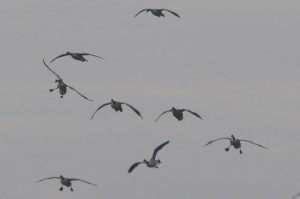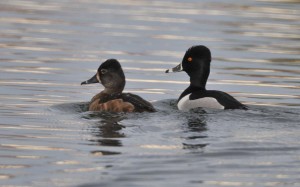
. . . and this one.

I didn’t really play hooky from work but should have, because soon the weather went right down the dumper and now reaches a high of 30 with numbing wind, which makes me want to curl up on the couch with a book, a dog and a husband (hopefully mine) to take a nice long nap. It takes a lot to pull on 7 layers of clothes and walk like the Michelin Man to the water’s edge to see what bird will offer me a fleeting shot. But I must, because the migration is about over and I know this because there’s ice forming on the lake. Migratory birds don’t loiter around waiting for people to notice them or photograph them; they come in, eat, rest, paddle about and take off.
To put things in perspective, when it was warm two weeks ago, the Canada geese were stopping by in the thousands; now we’re down to a just a few flocks a day that number between 25 and 50. Geese come in making all sorts of noise, calling out to all the other geese in Geesedomkom. As they approach, they also make these crazy turns because several of them have been shot at, and turning quickly makes it harder to get shot.
In contrast to the Canada geese, only a dozen coots have come and gone in the last couple of weeks and like other divers, they seem to appear out of nowhere with no announcement of any kind. In fact, I’ve never seen a flock of diver ducks fly into or away from my lake for that matter, and am beginning to wonder if they sometimes just get beamed up.
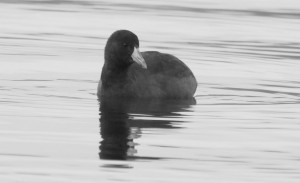
It’s fun to watch coots because they dive under the water, grab some vegetation and then pop back up like a cork. I figured if we recruited about a bizillion coots, we wouldn’t have to treat out lake for weeds any more.
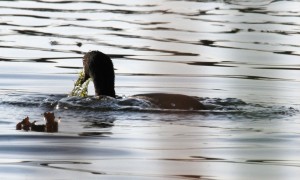
While the coots stuck around for a couple of weeks to gather up lots of weeds, the ringbills only stayed a couple of days. According to the Minnesota DNR site, these ducks eat wild rice and other aquatic plants and insects. Had I known that, I’d have cooked up some Uncle Ben’s to keep them around longer. They are gorgeous birds.
This female canvasback came in with some over diving ducks. According to the Delta Waterfowl site, these ducks eat vegetation as well as clams and snails. I’ll be inviting her to my clam bake next year.
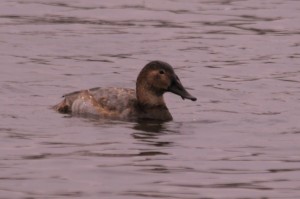
These scaups–also called bluebills–only stayed a few days. I watched these for quite a while and they didn’t eat anything. I suppose they do sooner or later.

The ruddy ducks also came and went. While they were here, the male slept and the female kept watch. I think they need counseling.
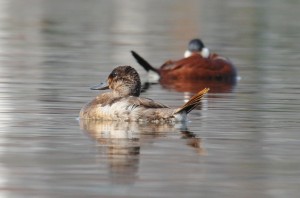
These redheads were gone a few hours after I saw them. According to the USGS web site, they’re primarily nocturnal feeders of vegetarians. That would explain why I didn’t see them eat anything during the day.
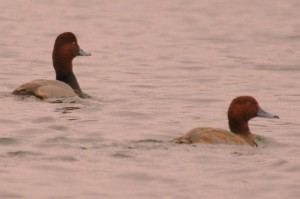
One of my favorite ducks is the bufflehead even though they never allow me to get a close shot. They supposedly eat insects, crustaceans and mollusks but not on the run.
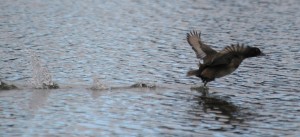
So that about covers it for the migratory ducks I saw recently, and given that ice is soon going to cover the lake, probably the last of the migratory birds I’ll see for a while. Oh, this hawk also stopped by–it landed on our deck while a dozen squirrels looked on. It may or may not be migrating.
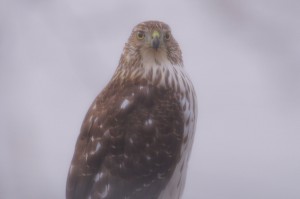
I shot a photo through my bay window, opened the back door and told him he was NOT allowed to consider my song birds prey items. After he flew off, I curled up on the couch with a book, a dog and a husband (hopefully mine) and took myself a nice long nap.
